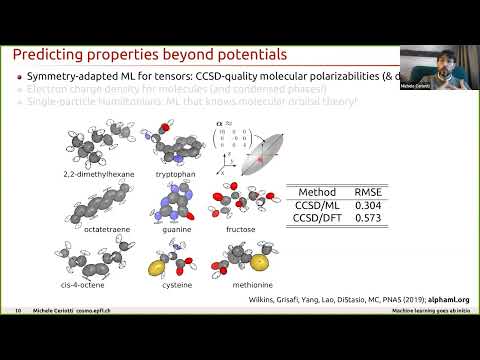Description:
Explore machine learning applications in condensed matter and materials physics through this 56-minute talk from the Alan Turing Institute. Delve into how ML methods enhance simulations of matter's building blocks, from electronic to molecular structures, boosting computational techniques like density functional theory and molecular dynamics. Discover the potential for new physical insights and exotic material engineering. Learn about atomic-scale modeling, predictive modeling challenges, and ML approaches for properties beyond potentials. Examine symmetry-adapted ML for tensors, electron charge density predictions, and ML techniques incorporating molecular orbital theory. Investigate the combination of structural and functional properties in ML models, enabling first-principles accuracy at realistic time and size scales. Trace the historical development of related concepts and explore how machine learning can uncover quantum emergence from quantum matter data.

Machine Learning in Condensed Matter and Materials Physics
Add to list
#Science
#Physics
#Condensed Matter Physics
#Computer Science
#Machine Learning
#Predictive Modeling